This article was co-authored by Karen Litzy, PT, DPT. Dr. Karen Litzy, PT, DPT is a licensed physical therapist, international speaker, owner of Karen Litzy Physical Therapy, PLLC, and the host of the Healthy Wealthy & Smart podcast. With over 20 years of experience, she specializes in a comprehensive approach to practicing physical therapy utilizing therapeutic exercises, manual therapy, pain education, and home exercise programs. Karen holds a Master of Science in Physical Therapy and a Doctor of Physical Therapy from Misericordia University. Karen is a member of the American Physical Therapy Association (APTA) and is an official spokesperson for the APTA as a member of their media corps. She lives and works in New York City.
There are 14 references cited in this article, which can be found at the bottom of the page.
wikiHow marks an article as reader-approved once it receives enough positive feedback. In this case, 100% of readers who voted found the article helpful, earning it our reader-approved status.
This article has been viewed 67,297 times.
Carpal tunnel syndrome (CTS) is caused by nerve compression and irritation within the wrist, which leads to pain, numbness, tingling and/or weakness in the wrist and hand. Repetitive strains / sprains, fractures, unusual wrist anatomy, arthritis and other conditions reduce the space within the carpel tunnel and increase the risk of CTS.[1] Symptoms can often be dealt with successfully at home, although sometimes medical treatment is needed to completely relieve them.
Steps
Dealing with CTS at Home
-
1Avoid compressing your median nerve. The carpal tunnel within the wrist is a narrow passageway made from small carpal bones attached by ligaments. The tunnel protects nerves, blood vessels and tendons. The primary nerve that allows for movement and sensation in your hand is the median nerve.[2] Thus, avoid activities that compress and irritate the median nerve, such as repeatedly flexing your wrists, lifting heavy weights, sleeping with bent wrists and punching solid objects.
- Make sure to keep your wrist watch and any bracelets loose around your wrists — having them too tight may irritate the median nerve.
- In most cases of CTS, a single cause is hard to identify. CTS is typically caused by a combination of factors, such as repetitive wrist strain combined with arthritis or diabetes.
- Wrist anatomy can make a difference — some people have naturally smaller tunnels or oddly shaped carpal bones.
-
2Stretch your wrists regularly. Stretching your wrists daily can be helpful for reducing or minimizing CTS symptoms.[3] In particular, extending your wrists helps to make more space for the median nerve within the carpal tunnel because it stretches the surrounding ligaments. The best way to extend / stretch both wrists at the same time is making the "prayer pose." Place your palms together about 6 inches in front of your chest and raise your elbows until you feel a stretch in both wrists. Hold it for 30 seconds and repeat 3-5x per day.[4]
- Alternatively, grab the fingers of the affected hand and pull back until you feel a stretch in the front of your wrist.
- Wrist stretches may temporarily trigger more CTS symptoms, such as tingling in the hand, but don't stop them unless you actually feel pain. The symptoms will diminish with time.
- In addition to hand tingling, other symptoms commonly associated with CTS include: numbness, throbbing pain, muscle weakness and/or color changes (too pale or red).
Advertisement -
3Shake your hands out. If you notice your hand(s) falling asleep or feel achy pain in your wrist / hand, a quick (albeit temporary) fix is to give your hands a good shake for between 10-15 seconds — sort of like you're trying to shake water off your hands in order to dry them. The shaking can help to promote blood circulation and nerve flow within the median nerve and temporarily get rid of symptoms. Depending on what your job is, you may have to resort to shaking your hands out many times throughout the day to keep CTS symptoms at bay.[5]
- CTS symptoms most often occur (and begin) in the thumb, index finger, middle finger and part of the ring finger, which is why people who have the condition often drop things and feel clumsy.
- The little finger is the only part of the hand not affected by CTS because its not innervated by the median nerve.
-
4Wear a special wrist support. Wearing a semi-rigid wrist support, brace or splint during the day can help prevent CTS symptoms because they keep the wrist in a neutral position and prevent it from flexing.[6] Splints or wrist braces should also be worn during potentially aggravating activities, such as typing on a keyboard, carrying groceries, driving and bowling. Wearing wrist supports during sleep can help relieve the occurrence of nighttime symptoms, particularly if you have a habit of tucking in your hands to your body.[7]
- You may need to wear wrist supports for several weeks (day and night) to get significant relief from CTS symptoms. However, for some, supports only provide negligible benefit.
- Wearing wrist splints at night is a good idea if you're pregnant and have CTS because pregnancy tends to increase swelling in the hands (and feet).
- Wrist supports, splints and braces can be bought at most pharmacies and medical supply stores.
-
5Consider altering your sleep position. Some sleeping postures can definitely aggravate the symptoms of CTS, which leads to reduced amount and quality of sleep. More specifically, sleeping with your fists clenched tightly and/or hands tucked into your body (flexed wrists) is the worst position for triggering CTS symptoms, although extending your arms above your head is not a good position either. Instead, sleep on your back (supine) or sides with your arms close to your body, and keep your hands open and wrists in a neutral position. This will promote normal blood circulation and nerve flow.[8]
- As noted above, wearing wrist supports while sleeping is helpful for preventing aggravating positioning, but it may take some time to get used to.
- Don't sleep on your stomach (prone) with your wrists compressed under your pillow. People who have this habit often wake up with numbness and tingling in their hands.
- Most wrist supports are made of nylon and fasten with velcro, which can irritate your skin. Therefore, cover your support with a sock or thin cloth to reduce skin irritation.
-
6Look at your work station closely. In addition to your sleep position, your CTS symptoms may also be caused or aggravated by a poorly designed work station. If your computer keyboard, mouse, desk or chair isn't properly positioned to accommodate your height and body proportions, it can put strain on your wrists, shoulders, neck and mid back. Thus, make sure your keyboard is positioned so your wrists are not constantly extended back while typing. Consider getting an ergonomic keyboard and mouse, which are designed to reduce stress on wrists and hands. Your employer might cover the costs for you.[9]
- Put thin cushioned pads underneath your keyboard and mouse to reduce the impact on your hands and wrists.
- Have an occupational therapist review your work station and suggest ergonomic changes tailored to your body.
- People who work on computers and registers (such as cashiers) for a job are at much higher risk of CTS.[10]
-
7Take over-the-counter (OTC) medication. The symptoms of CTS are often related to inflammation / swelling that develop in the wrist, which secondarily irritates the median nerve and nearby blood vessels. Thus, taking OTC non-steroidal anti-inflammatories (NSAIDs), such as ibuprofen (Motrin, Advil) or naproxen (Aleve), can be very helpful for reducing CTS symptoms, at least in the short term.[11] Painkillers, such as acetaminophen (Tylenol, Paracetamol), can also be used to combat the achy pain of CTS, but they don't impact the inflammation / swelling.
- NSAIDs and analgesics should be considered short-term strategies for controlling pain. There isn't any evidence that these medications cure or improve CTS in the long run.[12]
- Taking NSAIDs for too long (or too much at any time) significantly increases your risk of stomach irritation, ulcers and kidney failure. Always read the labels for dosage information.
- Taking too much acetaminophen or taking it for too can cause liver damage.
Getting Medical Treatment for CTS
-
1Make an appointment with your family doctor. If you are experiencing the above-mentioned symptoms in your wrist / hand for more than a few weeks, then make an appointment with your doctor. Your doctor will exam you and likely take x-rays and a blood test to rule out problems that can mimic CTS, such as rheumatoid arthritis, osteoarthritis, diabetes, stress fracture in the wrist or vascular problems.[13]
- Electro-diagnostic tests (EMG and nerve conduction) are often done to confirm the diagnosis of CTS by measuring the function of the median nerve.[14]
- You might be asked to perform specific tasks that are difficult with CTS, such as making a tight fist, pinching your thumb and forefinger together and moving small objects with precision.[15]
- Your doctor may also inquire about your job as some are high risk for CTS, such as carpenters, cashiers, assembly-line workers, musicians, auto mechanics and people who use computers extensively.
-
2See a health professional such as a physical therapist or massage therapist.[16]
- Physical therapist. Most of the time, carpal tunnel syndrome symptoms can be treated conservatively. A physical therapist will asses your joints, muscles and ligaments to see the underlying cause of your carpal tunnel symptoms. Treatments may include modalities such as ultrasound for reducing inflammation and promoting healing, exercises to increase flexibility and strengthen the associated muscles, and ergonomic education to assess your workplace or daily activities while providing modifications to reduce any stresses.
- Massage therapist. In some instances, carpal tunnel syndrome type of symptoms can be associated with Myofascial Pain Syndrome, a condition associated with the presence of trigger points, or more commonly known as muscle knots. Research has shown that trigger points are common in those with carpal tunnel symptoms.[17] In addition, a study found that treatments on these knots have led to improvements.[18]
-
3Try corticosteroid injections. Your doctor may recommend injecting a corticosteroid medication (such as cortisone) into your wrist or base of your hand to relieve the pain, inflammation and other symptoms of CTS.[19] Corticosteroids are potent and quick-acting drugs that can decrease swelling in your wrist and relieve pressure on your median nerve(s). Taking oral steroids by mouth are another option, but it's not considered nearly as effective as the injections, plus the side effects are more pronounced.[20]
- Other common steroid medications used for CTS are prednisolone, dexamethasone and triamcinolone.
- Possible complications associated with corticosteroid injections include local infection, excessive bleeding, tendon weakening, muscle atrophy and nerve damage. Thus, injections are usually limited to two per year.
- If steroid injections don't significantly reduce your CTS symptoms, then surgery should be considered.
-
4Consider carpal tunnel surgery as a last resort. If all other home remedies and treatments fail to eliminate your CTS symptoms, then your doctor may recommend surgery. Surgery should be thought of as a last resort due to the risks of causing more damage, although it can completely relieve symptoms in a decent proportion of patients. The goal of CTS surgery is to relieve pressure on the median nerve by cutting the primary ligament pressing upon it. CTS surgery can be performed in two different ways: endoscopic or open surgery.[21]
- Endoscopic surgery involves using a thin telescope-like device with a tiny camera on the end (endoscope), which is inserted into your carpal tunnel through an incision in your wrist or hand. The endoscope allows the surgeon to see into the tunnel and cut the problematic ligament.
- Endoscopic surgery usually results in the least amount of pain and side effects, as well as the quickest recovery.
- In contrast, open surgery involves a larger incision in your palm and over your wrist in order to cut through the ligament and liberate the median nerve.
- Surgery risks include: nerve damage, infection and scar tissue formation — all of which can potentially make CTS become worse.
-
5Be patient during your recovery. Following the outpatient CTS surgery, you'll be asked to frequently lift your hand above your heart and wiggle your fingers, which helps to reduce swelling and prevent stiffness. Mild pain, inflammation and stiffness in the hand / wrist can be expected post-surgery for up to 6 months, and complete recovery may take a full year. For the initial 2-4 weeks post-surgery, you may be asked to wear a wrist support, although using your hand is encouraged.[22]
- Most people's CTS symptoms get better after surgery, but recovery is often slow and gradual. Hand strength typically returns to normal about 2 months after surgery.[23]
- CTS recurs about 10% of the time post-surgery and may require follow-up surgery many months or a few years later.
Expert Q&A
Did you know you can get expert answers for this article?
Unlock expert answers by supporting wikiHow
-
QuestionCan carpal tunnel syndrome go away on its own?
 Karen Litzy, PT, DPTDr. Karen Litzy, PT, DPT is a licensed physical therapist, international speaker, owner of Karen Litzy Physical Therapy, PLLC, and the host of the Healthy Wealthy & Smart podcast. With over 20 years of experience, she specializes in a comprehensive approach to practicing physical therapy utilizing therapeutic exercises, manual therapy, pain education, and home exercise programs. Karen holds a Master of Science in Physical Therapy and a Doctor of Physical Therapy from Misericordia University. Karen is a member of the American Physical Therapy Association (APTA) and is an official spokesperson for the APTA as a member of their media corps. She lives and works in New York City.
Karen Litzy, PT, DPTDr. Karen Litzy, PT, DPT is a licensed physical therapist, international speaker, owner of Karen Litzy Physical Therapy, PLLC, and the host of the Healthy Wealthy & Smart podcast. With over 20 years of experience, she specializes in a comprehensive approach to practicing physical therapy utilizing therapeutic exercises, manual therapy, pain education, and home exercise programs. Karen holds a Master of Science in Physical Therapy and a Doctor of Physical Therapy from Misericordia University. Karen is a member of the American Physical Therapy Association (APTA) and is an official spokesperson for the APTA as a member of their media corps. She lives and works in New York City.
Physical Therapist
-
QuestionWill the doctor help with carpal tunnel syndrome?
 Karen Litzy, PT, DPTDr. Karen Litzy, PT, DPT is a licensed physical therapist, international speaker, owner of Karen Litzy Physical Therapy, PLLC, and the host of the Healthy Wealthy & Smart podcast. With over 20 years of experience, she specializes in a comprehensive approach to practicing physical therapy utilizing therapeutic exercises, manual therapy, pain education, and home exercise programs. Karen holds a Master of Science in Physical Therapy and a Doctor of Physical Therapy from Misericordia University. Karen is a member of the American Physical Therapy Association (APTA) and is an official spokesperson for the APTA as a member of their media corps. She lives and works in New York City.
Karen Litzy, PT, DPTDr. Karen Litzy, PT, DPT is a licensed physical therapist, international speaker, owner of Karen Litzy Physical Therapy, PLLC, and the host of the Healthy Wealthy & Smart podcast. With over 20 years of experience, she specializes in a comprehensive approach to practicing physical therapy utilizing therapeutic exercises, manual therapy, pain education, and home exercise programs. Karen holds a Master of Science in Physical Therapy and a Doctor of Physical Therapy from Misericordia University. Karen is a member of the American Physical Therapy Association (APTA) and is an official spokesperson for the APTA as a member of their media corps. She lives and works in New York City.
Physical Therapist
-
QuestionWhat causes carpal tunnel syndrome?
 Karen Litzy, PT, DPTDr. Karen Litzy, PT, DPT is a licensed physical therapist, international speaker, owner of Karen Litzy Physical Therapy, PLLC, and the host of the Healthy Wealthy & Smart podcast. With over 20 years of experience, she specializes in a comprehensive approach to practicing physical therapy utilizing therapeutic exercises, manual therapy, pain education, and home exercise programs. Karen holds a Master of Science in Physical Therapy and a Doctor of Physical Therapy from Misericordia University. Karen is a member of the American Physical Therapy Association (APTA) and is an official spokesperson for the APTA as a member of their media corps. She lives and works in New York City.
Karen Litzy, PT, DPTDr. Karen Litzy, PT, DPT is a licensed physical therapist, international speaker, owner of Karen Litzy Physical Therapy, PLLC, and the host of the Healthy Wealthy & Smart podcast. With over 20 years of experience, she specializes in a comprehensive approach to practicing physical therapy utilizing therapeutic exercises, manual therapy, pain education, and home exercise programs. Karen holds a Master of Science in Physical Therapy and a Doctor of Physical Therapy from Misericordia University. Karen is a member of the American Physical Therapy Association (APTA) and is an official spokesperson for the APTA as a member of their media corps. She lives and works in New York City.
Physical Therapist There's an opening in your wrist where nerves and blood vessels feed into your hand. If you run into swelling on your wrist, it crowds up those nerves and vessels and that's what causes the carpal tunnel syndrome. It's very common if you spend a lot of time doing any repetitive hand and finger movements, like typing.
There's an opening in your wrist where nerves and blood vessels feed into your hand. If you run into swelling on your wrist, it crowds up those nerves and vessels and that's what causes the carpal tunnel syndrome. It's very common if you spend a lot of time doing any repetitive hand and finger movements, like typing.
References
- ↑ https://www.painscience.com/articles/repetitive-strain-injuries.php
- ↑ http://www.hopkinsmedicine.org/neurology_neurosurgery/centers_clinics/peripheral_nerve_surgery/conditions/carpal_tunnel_syndrome.html
- ↑ Karen Litzy, PT, DPT. Physical Therapist. Expert Interview. 27 August 2020.
- ↑ https://myhealth.alberta.ca/Health/aftercareinformation/pages/conditions.aspx?hwid=ad1506
- ↑ https://my.clevelandclinic.org/health/diseases/4005-carpal-tunnel-syndrome
- ↑ https://health.clevelandclinic.org/3-steps-to-fight-your-carpal-tunnel-syndrome/
- ↑ Karen Litzy, PT, DPT. Physical Therapist. Expert Interview. 27 August 2020.
- ↑ https://www.assh.org/handcare/blog/advice-from-a-certified-hand-therapist-how-sleep-positions-affect-your-hands
- ↑ https://www.healthlinkbc.ca/health-topics/tn9041
- ↑ http://www.hopkinsmedicine.org/neurology_neurosurgery/centers_clinics/peripheral_nerve_surgery/conditions/carpal_tunnel_syndrome.html
- ↑ http://orthoinfo.aaos.org/topic.cfm?topic=a00005
- ↑ https://www.aafp.org/afp/2003/0715/p265.html
- ↑ https://my.clevelandclinic.org/health/diseases/4005-carpal-tunnel-syndrome
- ↑ http://www.hopkinsmedicine.org/neurology_neurosurgery/centers_clinics/peripheral_nerve_surgery/conditions/carpal_tunnel_syndrome.html
- ↑ http://www.hopkinsmedicine.org/neurology_neurosurgery/centers_clinics/peripheral_nerve_surgery/conditions/carpal_tunnel_syndrome.html
- ↑ https://orthoinfo.aaos.org/en/recovery/carpal-tunnel-syndrome-therapeutic-exercise-program/
- ↑ http://www.ncbi.nlm.nih.gov/pubmed/21526092
- ↑ http://www.ncbi.nlm.nih.gov/pubmed/20808615
- ↑ https://health.clevelandclinic.org/3-steps-to-fight-your-carpal-tunnel-syndrome/
- ↑ https://www.aafp.org/afp/2003/0715/p265.html
- ↑ https://www.aafp.org/afp/2003/0715/p265.html
- ↑ https://orthoinfo.aaos.org/en/diseases--conditions/carpal-tunnel-syndrome
- ↑ https://orthoinfo.aaos.org/en/diseases--conditions/carpal-tunnel-syndrome
About This Article
One way you can deal with carpal tunnel syndrome is by stretching your wrists 3-5 times a day to reduce pressure on your median nerve, which is the primary nerve that allows you to move your wrist. To do this, try placing your palms together and raising your elbows until you feel a stretch in both wrists. You should also try to avoid activities that aggravate the median nerve such as lifting heavy objects or flexing your wrists repeatedly. At work, make sure to position your keyboard and chair height so your wrists and arms are parallel to the floor, which will reduce strain on your wrists. To learn how to treat carpal tunnel syndrome with the help of a physical therapist, read more from our Medical co-author.
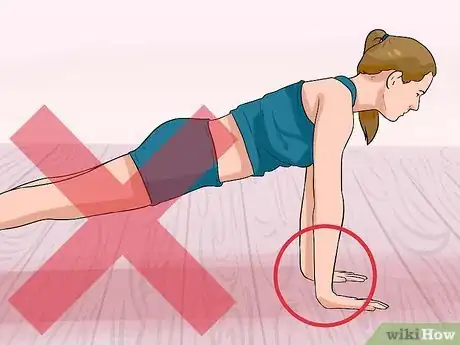
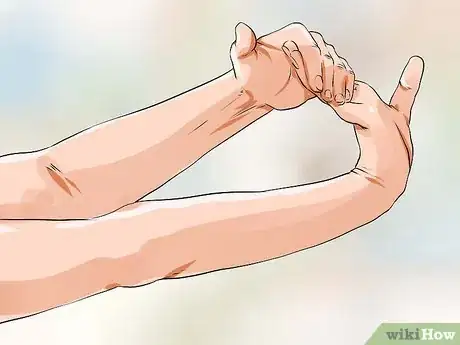

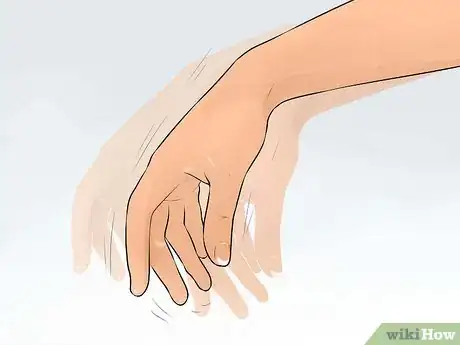

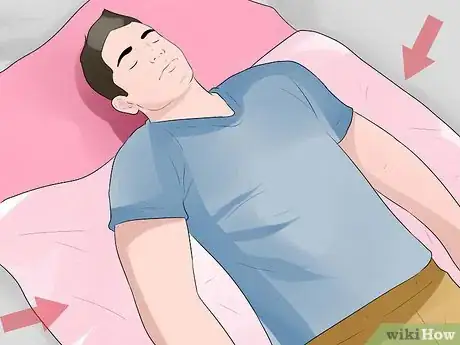

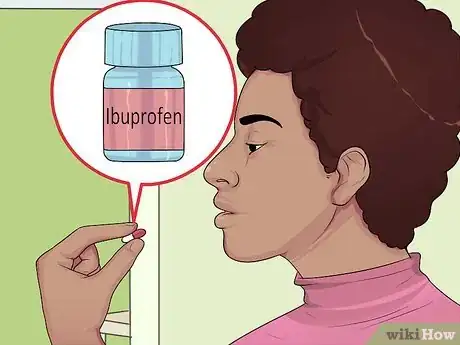
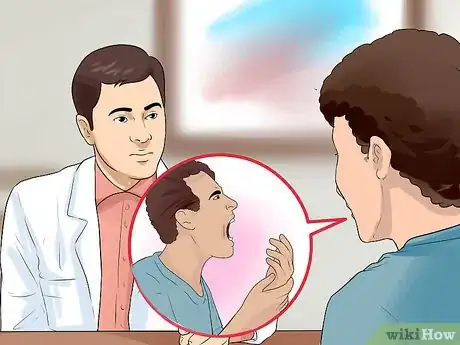
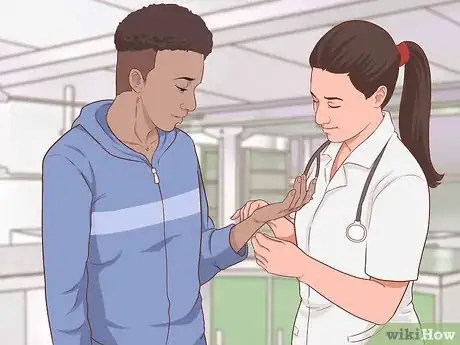
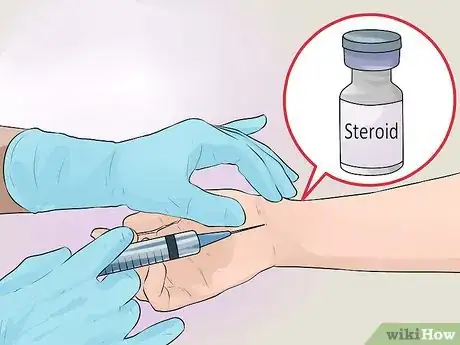

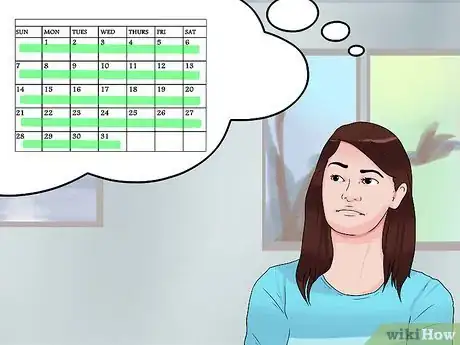
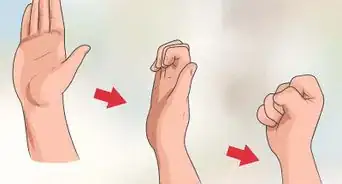

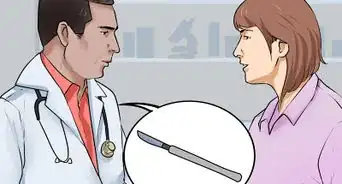
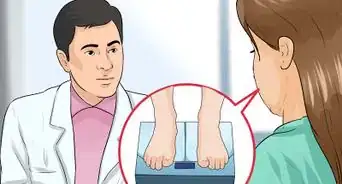
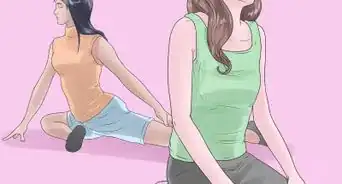


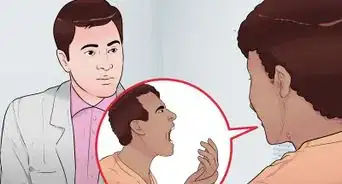
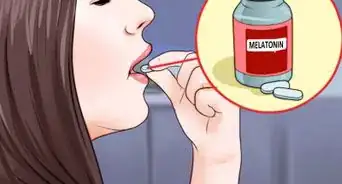
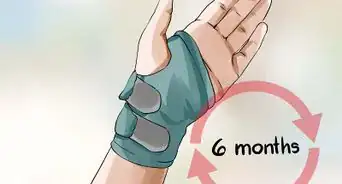
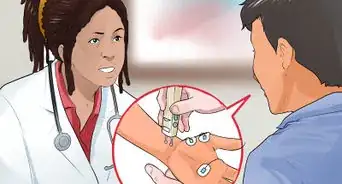










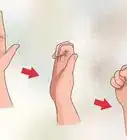
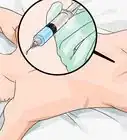
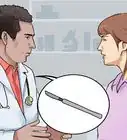
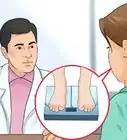



































Medical Disclaimer
The content of this article is not intended to be a substitute for professional medical advice, examination, diagnosis, or treatment. You should always contact your doctor or other qualified healthcare professional before starting, changing, or stopping any kind of health treatment.
Read More...